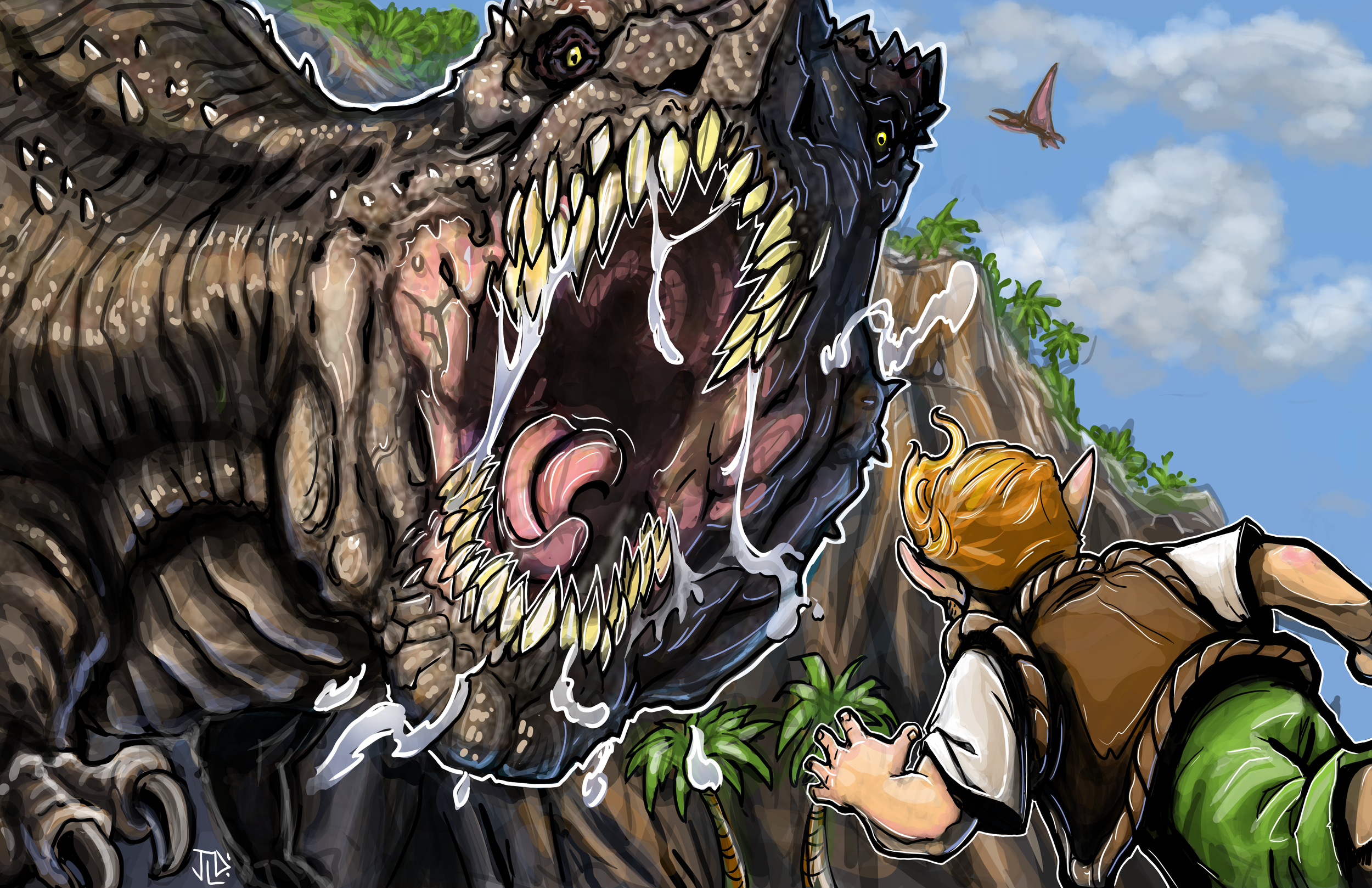Major Image: Now a Major Motion Picture
Usable By: Bard, Sorcerer, Warlock, Wizard
Spell Level: 3
School: Illusion
Casting Time: 1 action
Range: 120 feet
Duration: Concentration, up to 10 minutes
Components: V, S, M (A bit of fleece)
You create the image of an object, a creature, or some other visible phenomenon that is no larger than a 20-‐‑foot cube. The image appears at a spot that you can see within range and lasts for the duration. It seems completely real, including sounds, smells, and temperature appropriate to the thing depicted. You can’t create sufficient heat or cold to cause damage, a sound loud enough to deal thunder damage or deafen a creature, or a smell that might sicken a creature (like a troglodyte’s stench).
As long as you are within range of the illusion, you can use your action to cause the image to move to any other spot within range. As the image changes location, you can alter its appearance so that its movements appear natural for the image. For example, if you create an image of a creature and move it, you can alter the image so that it appears to be walking. Similarly, you can cause the illusion to make different sounds at different times, even making it carry on a conversation, for example.
Physical interaction with the image reveals it to be an illusion, because things can pass through it. A creature that uses its action to examine the image can determine that it is an illusion with a successful Intelligence (Investigation) check against your spell save DC. If a creature discerns the illusion for what it is, the creature can see through the image, and its other sensory qualities become faint to the creature.
At Higher Levels. When you cast this spell using a spell slot of 6th level or higher, the spell lasts until dispelled, without requiring your concentration.
Review by Sam West, Twitter:@CrierKobold
Illusion magic has a wild impact at some tables; some players can wield it like super power, and bend the world to their whim with the power of deception and some convincing holograms. Others will find it has next to no practical uses, and no matter what they think up, the illusions fail to have any meaningful impact on a plan. Major Image is the poster child for this kind of magic; in the right hands at the right table, it can break the game in half. At other tables or in other hands, it can be a gigantic waste of a spell slot.
The core reason illusions can be so polarizing is baked into their nature; they can represent anything. Major Image can be a creature, object, or other visible phenomenon, and comes with scents and temperatures to sell its existence. A 20-foot cube can fit up to gargantuan creatures; you can have it be anything from a solar to a kraken to a pixie. You can’t make groups of objects, so there are some rules binding what is possible with it, but the right thing at the right time in the right place against the right people can produce results no other spells can. Major Image can represent a captured diplomat or noble, a monstrous owlbear, a storm giant rising from the ocean depths, or a conveniently placed boulder that can cover the whole party.
Major Image’s up-cast is the best kind; it fundamentally changes the nature of the spell. Removing concentration and adding an indefinite duration means the use cases for both modes have clear and distinct moments you’d want to use them. 3rd level Major Images will be exactly as effective as 6th level ones if you only need it for ten minutes and don’t anticipate dropping concentration. 6th level Major Images offer you a new tool to play with in the upper tiers when you do find yourself needing a permanent image of a balor guardian for your treasure room.
While all of these examples give it the possibility of functionally nearly as actual creature or object, some tables will relentlessly investigate said illusions, while others may rarely or never make the Investigation checks. In worlds where illusion magic is commonplace, the dumbest creatures may still stop to inspect most things they find threatening should they suspect magic users are afoot. If you’re DMing with an illusionist, I’d recommend inspecting illusions only when something is majorly out of place; rewarding players for being a part of the world and integrating the lore and richness around them into their plans as part of illusions can feel great for everyone involved.
Ultimately Major Image will be the kind of spell some players (like me) want every time they’re playing the game. Having a tool to make basically whatever I want appear where I want it when I want it opens up an infinite well of wacky ideas for solving tons of problems. Some players really won’t want to rely on reaction and manipulation, and instead will prefer tools that provide tangible effects that can’t be ignored or seen through. Depending on which you are, Major Image may be right for you.
Thank you for visiting!
If you’d like to support this ongoing project, you can do so by buying my books, getting some sweet C&C merch, or joining my Patreon.
The text on this page is Open Game Content, and is licensed for public use under the terms of the Open Game License v1.0a.
‘d20 System’ and the ‘d20 System’ logo are trademarks of Wizards of the Coast, Inc.
and are used according to the terms of the d20 System License version 6.0.
A copy of this License can be found at www.wizards.com/d20.



